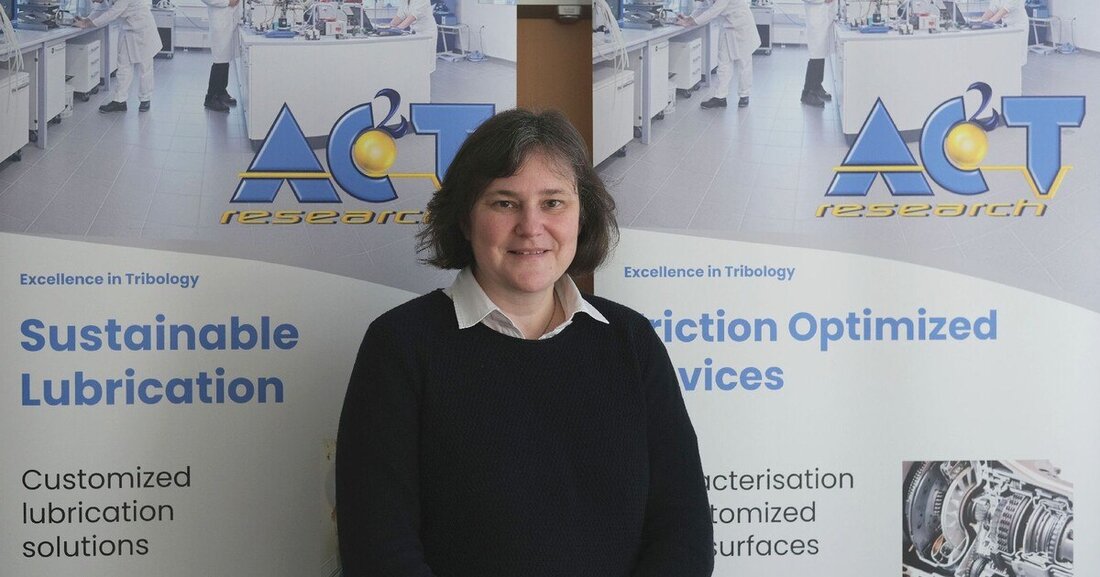Lubricants: The new all-rounders
Lubricant researcher Nicole Dörr gives an outlook on the new generation of operating fluids for electric vehicles.

Lubricants: The new all-rounders
Automotive industry:As scientific director of AC2T research GmbH, you are actively shaping the future of lubricant development - where is the journey going?
Nicole Dörr: The increasing spread of electromobility brings with it new requirements for lubricants and operating fluids in vehicles. Almost all major lubricant manufacturers have taken up the issue, and there is currently lively competition to see who can bring the best products for the new drive technology onto the market.
How do the lubricants in electric cars differ from those in vehicles with combustion engines?
Classic engine oil, for example, has to cope with the fuel input and the soot produced during combustion - these naturally play no role in the electric motor. In this case, however, the lubrication of the bearings must be tailored to very high speeds. The electric motors currently rotate at around 10,000 rpm, but the trend is towards 30,000 rpm and more. For these requirements, grease-lubricated rolling bearings are used to ensure lifelong lubrication of the engine.
So is there no longer an oil change in a purely electrically powered vehicle?
Basically, the operating fluids in an electric vehicle are designed for their service life and there is no provision for changing them. However, there are several resource circuits for different tasks. The windings of the electric motor must be cooled, the gearbox lubricated and the battery kept in the ideal temperature range. Managing engine cooling and gear lubrication with the same fluid in a single circuit represents a challenging task for lubricant development. Water would actually be ideal for temperature regulation thanks to its low viscosity and high heat capacity, but lubrication requires a stable film with a sufficiently high viscosity. A contradiction for which we have to find a compromise in the laboratory.
Will lubricating oil manufacturers be able to make up for the decline in motor oil business with operating materials for electric vehicles?
That is not to be expected. Around 36 to 40 million tonnes of lubricants are currently produced worldwide every year, of which around 30 percent are used as engine oils in the automotive sector. The oil industry is now also developing lubricants and coolants for electric vehicles based on synthetic esters or hydrocarbons, but the quantities required only make up a portion of the previous volumes. Lubricant manufacturers are already preparing for the changes if combustion engines are actually banned one day.
Which operating fluids are used to cool the battery in an electric car?
The conventional method relies on cooling plates through which a mixture of water and glycol flows. Instead of this indirect cooling - the coolant must not come into contact with the battery cells - so-called immersion cooling is increasingly being used. Here, the individual battery cells are flushed directly with an electrically non-conductive fluid. In this way, the temperature in the battery can be kept to an accuracy of less than 1 degree Celsius, thereby optimizing the efficiency of the battery. The Upper Austrian company Kreisel Elektrik has patented this immersion cooling. The lubricant manufacturer TotalEnergies has recently started offering such a fluid.
What current research projects in the lubricants sector are you currently working on?
Our customers include well-known lubricant manufacturers and automotive suppliers. Among other things, we test the long-term behavior of the fluids that are developed for use in electric vehicles. The aim is to design the operating materials for the service life of a vehicle, so stability must be ensured over the entire period of use. If the tests show that they do not meet the requirements, we can use our know-how to make recommendations for changing the recipe in order to achieve an optimal result.

 Suche
Suche
 Mein Konto
Mein Konto